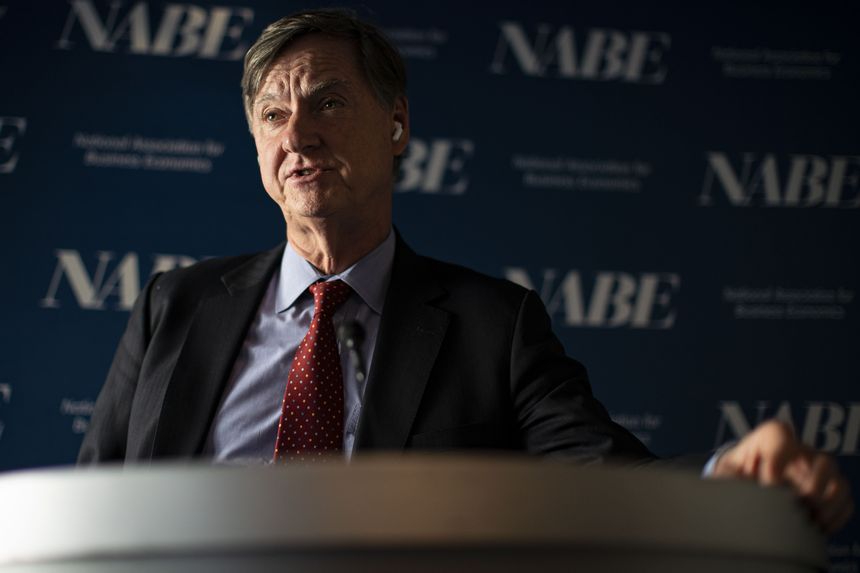The Federal Reserve will need to hold interest rates high enough to slow the economy after it lifts them through the end of this year and into early next year, a central bank official said Monday.
But Chicago Fed President Charles Evans said that after raising rates to around slightly more than 4.5% by next March, it would be appropriate for the central bank to pause rate rises to see the effects of those increases.
Mr. Evans said he expects that policy setting, together with the Fed’s continuing program of reducing its $8.8 trillion in asset holdings, will restrict economic growth and soften the labor market.
The Fed has raised the benchmark federal-funds rate at its last three meetings by 0.75 percentage point, most recently last month to a range between 3% and 3.25%.
“Our rapid pace of rate increases has fast-tracked our arrival to such a restrictive stance,” said Mr. Evans before the National Association of Business Economics annual meeting in Chicago. He said the historically quick pace was warranted because interest rates had been too low, but he also signaled concern about the costs of raising rates too much reported The Wall Street Journal Digital.
Subscribe today and get 52 weeks of The WSJ Print Edition with daily delivery for $318
“Overshooting is costly, too, and there is great uncertainty about how restrictive policy must actually become,” he said. “This puts a premium on the strategy of getting to a place where policy can plan to rest and evaluate data and developments.”
Speaking to reporters later Monday, Mr. Evans said he was worried about overreacting to additional reports of stronger-than-anticipated inflation. “We could get a few of those, and if we’ve already done” so many rate increases, “that sort of puts us at somewhat greater risk of responding overly aggressive,” he said.
Mr. Evans said even though, in theory, the Fed could cut rates if it concluded it had raised them too high, he didn’t think such a strategy would be as easy to execute in practice.
The Fed has effectively decided to raise rates over the next few months to levels that are designed to restrict growth without much sensitivity to the underlying data in the coming months, said Mr. Evans. “It puts a premium on expressing the idea that…a 4.5%-4.75% funds rate is a place to rest,” he said.
To conclude that interest rates needed to rise higher than that, Mr. Evans said he would want to see evidence that consumers and businesses were coming to expect higher inflation to persist. Officials pay close attention to surveys of inflation expectations because they believe such expectations can be self-fulfilling.
Buy Bloomberg Digital Subscription 5 Years for $60
If those inflation expectations “started to rise, that would be a different ballgame,” he said.
Mr. Evans said he had grown less optimistic about the potential for more workers to enter the labor market from the sidelines, reducing the prospect that the Fed can reduce pressure on wages without slowing demand with higher interest rates.
Mr. Evans, who is set to retire in January, was a strong advocate last year for waiting to withdraw monetary stimulus due to the view that inflation pressures would fade on their own. Most Fed officials argued for much of last year that prices were rising faster because of supply-chain bottlenecks and other shortages.
But Mr. Evans said Monday that the economy is currently experiencing a “broad-based increase in inflationary pressures that monetary policy must address.” Without higher interest rates to slow spending, hiring and investment, he said, “inflation will come down some, but not to anything near our 2% objective.”

